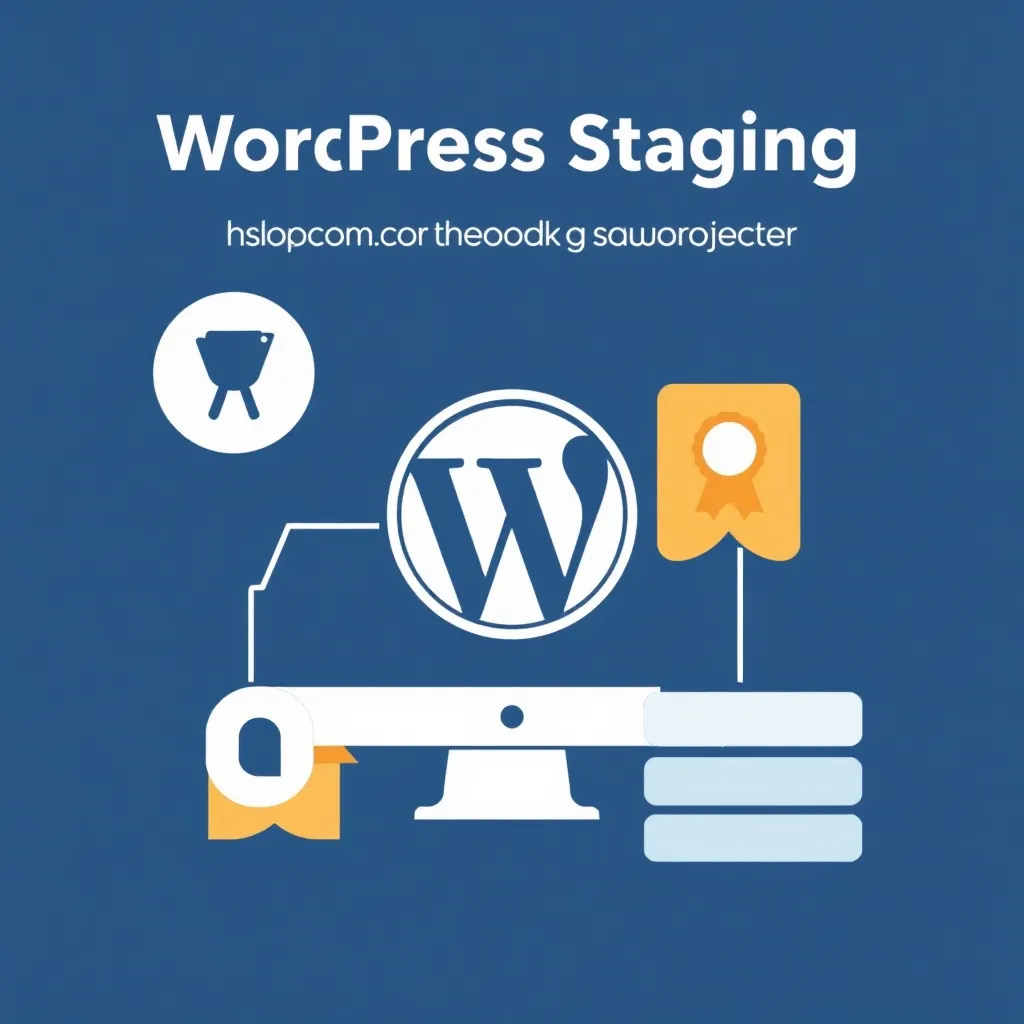Cloud hosting and shared hosting are two common hosting models that are particularly suitable for beginners. But while cloud hosting scalability and high availability, it scores highly in the shared hosting with easy handling and an affordable price - ideal for smaller projects or first website experiences.
Key points
- Performance: Cloud hosting uses multiple servers, which leads to more stable performance.
- Simplicity: Shared hosting is usually fully managed and easy to use.
- Scaling: Cloud hosting grows flexibly with traffic.
- Cost: Shared hosting is inexpensive and suitable for small websites.
- Security: Cloud hosting offers more security through distribution across different servers.

What is cloud hosting anyway?
Cloud hosting uses a structure consisting of many physical servers networked together. This infrastructure ensures flexible resource allocation. In contrast to traditional hosting models, websites do not run on a specific server, but draw computing power from a so-called resource pool. This means that the website remains stable even when there is a heavy influx of visitors. So if you are planning to grow your website, cloud hosting offers a resilient environment with high Availability. Many services already rely on cloud hosting - from online stores to learning platforms.What is shared hosting - and for whom is it worthwhile?
Shared hosting shares a physical server with many other users. Each website on this server has limited resources, such as CPU and memory. This is what makes the model so affordable - you can get started for as little as five euros a month. Shared hosting is a practical solution, especially for small websites with low traffic, such as blogs or portfolio sites. The Administration is completely taken care of by the hosting provider. This makes this model ideal for beginners who want to get started without any prior technical knowledge. On this starter page about shared hosting you will find further examples and tips for implementation.
Similarities and differences in direct comparison
Anyone comparing cloud hosting and shared hosting will recognize considerable technical, functional and financial light years. The following table shows the differences at a glance:| Feature | cloud hosting | shared hosting |
|---|---|---|
| Performance | Very high, even with high traffic | Dependent on other users on the server |
| Flexibility | Very flexible due to scaling | Static, hardly any flexible adjustment |
| Administration | Manage partially or completely yourself | Completely managed by the provider |
| Costs | Higher, from approx. 15-20 euros/month | Low, often from approx. 3-5 euros/month |
| Security | Higher due to distributed structure | Lower, as all users share the same server |
Technical entry hurdle: What should you consider as a beginner?
Many beginners shy away from technical terms such as cPanel, DNS records or PHP settings. Shared hosting largely eliminates the need for technical configurations. The provider provides wizards that simplify the setup of WordPress or email accounts. Cloud hosting often requires a certain understanding of server architectures, even though many providers now offer user-friendly interfaces. If you want to get involved with hosting in the long term, you should Basics in web server configuration and hosting administration. An informative overview can be found in the Web hosting guide.
How much control do you really need as a website operator?
Not everyone needs root access or individual server configurations. Shared hosting offers restricted access with fixed settings - ideal for people who don't want to worry about technical details. Cloud hosting gives you much more freedom - from installing your own software to setting up specific cron jobs. If you want to help shape the environment of your website yourself, then cloud hosting advantage. This design freedom is indispensable for projects with special software or database requirements.When is it worth switching from shared to cloud hosting?
The right time to switch is when the website regularly has loading problems or certain functions are limited. Shared hosting can also reach its limits with rapidly growing traffic, for example due to advertising or viral content. Cloud hosting allows you to flexibly increase resources - without having to switch providers. Anyone planning a long-term project (e.g. online store or digital learning platform) is better off with the advantages of a cloud server significantly better positioned. Scalability is the key factor here. Lever.
Safety aspects briefly analyzed
By being distributed across many servers, cloud hosting offers significantly better resistance to attacks. Even in the event of a hardware failure, the website remains accessible. With shared hosting, vulnerabilities of a single website can affect the entire server under certain circumstances. The more websites running on the same server, the greater the potential Risk. If your website processes sensitive data or you work with payment data, you should opt for cloud hosting right from the start.Performance and loading time - how relevant is this in practice?
Google takes loading times into account in its ranking, so performance plays a central role in visibility. Shared hosting servers can become slower due to high loads from other users. This has a negative impact on user satisfaction and conversion rates. Cloud hosting distributes requests across different servers, keeps loading times stable and reduces timeouts. If you are targeting a mobile audience, you will particularly benefit from fast response times.
Which hosting structure suits your project goal?
Imagine three scenarios: A personal blog followed by a few hundred visitors a month. A regional company with a contact form and image gallery. And a fast-growing online store with live product inventories. Shared hosting is usually sufficient for the first two scenarios - especially if the technological requirements are low. In the third case, cloud hosting is almost absolutely necessary to ensure growth and Stability to ensure thatLong-term planning pays off
When it comes to hosting, you shouldn't just look at your current needs. If you think strategically, choose a hosting model that will still suit your website in a year's time. Frequent provider changes disrupt brand development and increase costs. I recommend making a realistic assessment of future traffic and functional scope at the start. If you want to publish a lot of content in the long term, switching to cloud hosting is often the smarter move.
Important step-by-step considerations before making a decision
Before you finally decide on cloud or shared hosting, it can help to proceed in small steps. First, you should make a list of the most important requirements for your website. This could be content (e.g. lots of images, videos or larger files), but also the type of interaction that users will have with your site. Do you want to integrate email services, store data or run an online store? These points often determine how many server resources you actually need on a day-to-day basis.
Next, you should realistically assess how much traffic your site can grow. If you are just starting out, shared hosting is usually sufficient. You can gain experience and record your first successes without incurring high monthly costs. However, if your site sees a sharp increase in traffic after just a few months, the cloud environment offers more reserves. Pay particular attention to the possibility of increasing CPU cores, memory and storage space at any time. It can be useful to find out in advance which cloud hosting packages or tariffs your hosting provider offers so that you can upgrade directly in the event of rapid growth.
Data protection and data backup are also relevant aspects that should influence your decision. Cloud hosting providers can operate data centers in different countries. If you have to comply with GDPR or other data protection regulations, the choice of server location plays an important role. Although these aspects are also present in shared hosting, they are often more standardized, as the offer is more tailored to smaller projects and private users. In any case, it is advisable to check the provider's data protection guidelines carefully to ensure that your user or customer data is adequately protected.
Application scenarios and practical tips for implementation
To make it easier for you to get started, it makes sense to set up a test project on the respective hosting. With a test installation of WordPress or a simple HTML template, you can quickly get a feel for how smoothly the environment runs and how easy it is to use. Setting up a WordPress instance is usually particularly easy with shared hosting, as many providers offer so-called "1-click installations". This allows you to install a complete site and add your first content in a short space of time without having to delve deeper into the technical details.
If, on the other hand, you try cloud hosting, you may come across more configuration options, but also certain challenges. For example, you could create your own server snaps, configure individual security rules or define complex routing options for your data traffic. The latter is particularly interesting for growing projects, as it gives you very precise control over the network setup. For beginners, however, this may mean that they first have to familiarize themselves with new topics - but this will lead to a stronger technical understanding in the long term.
Another tip: Check your website statistics regularly. Visits, click behavior and usage times provide information about how well your current hosting solution is working. If you notice that your page load times are suddenly increasing sharply or that you are getting a lot of error messages, this could be a sign that you urgently need more resources. With shared hosting, it can also happen that another customer generates a lot of traffic on the same server and negatively impacts your performance. With cloud hosting, this risk is lower because you can distribute the load across several servers.
The question of backups should not be forgotten: even if many providers create regular backups, it is worth maintaining your own backup system. Especially in the cloud environment, where you may be using several server instances, an additional external backup can prevent valuable data from being lost. With shared hosting providers, it is a good idea to use an automated plugin for your CMS that backs up the database and files at regular intervals. This ensures that you can recover quickly and easily in the event of data loss.



